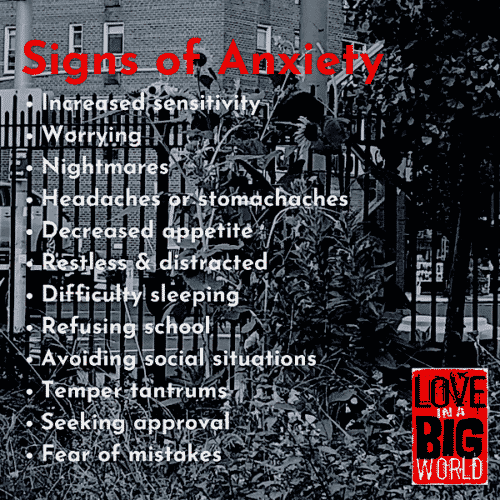Back-to-school time is usually a mix of nervousness and excitement. This year students may experience more anxiety than usual after 18 months of either distance or hybrid learning. To return to “normal,” we must watch and listen closely to the unspoken needs of children and their families for Back to School Fears.
COVID-19 has forever changed us and our way of life, including education. Let us first acknowledge that there is no return to “normal”. Our “normal” passed away in March 2020 when the world went into lockdown. What we are entering into now is the familiar. It is familiar to go to in-person school, complete with lunches in the cafeteria and crowds at sporting events. It is familiar to walk down the halls and see the full faces of students and teachers instead of just eyes and eyebrows. It is familiar to hear each other speak rather than try to decipher muffled voices. The familiar brings us comfort and confidence.
For some students and families, the pandemic has meant a slower pace of life. More time together equals family dinners and game nights. For others, the economic shutdown created greater instability, including hunger and homelessness. Job loss, which occurs across all sectors of society, is a significant risk factor for child abuse. The psychological impact can impact for years to come (Lawson, Piel, Simon, 2020).
The truth is that despite our best efforts to connect with children during their time away from school, we do not know the full extent of what they endured. We won’t know the mental or academic impact until they come back into the building. There are indications that suicidal ideation among youth has increased (Hill, 2020) and that students have experienced a three-month learning loss in math and one-and-a-half months in reading (McKinsey & Co, 2020). Additionally, disparities in access and achievement for students of color have been highlighted while simultaneously, abuse and harassment of Asian Americans have increased (U.S. Dept. of Education, 2021). We have all been living through multi-dimensional global trauma.
How do we help our students transition back to the familiar? Firstly, we must prepare ourselves. Not only do we equip ourselves with the resources needed to engage students in a nurturing and supportive environment, but we also must give ourselves time and space to recharge. Whether that means routine exercise, healthful eating, time with friends, and a creative project, we must be sure that our cup is full before heading back into the classroom. Likewise, self-care needs to be a part of our daily schedule. Remember, we can’t give what we don’t have.
Secondly, we must create time and space for connection with our students and their families. Education is the business of caring. Caring is showing concern for the well-being of others; taking the time to let others know they are important. This can happen by offering coffee to parents at drop-off and carving out time for a morning meeting with students. Creating opportunities for authentic connection and meaningful conversation requires intentionality. This goes far beyond purchasing a digital license to a curriculum. It means embracing systemic change to improve the culture and climate of the school community.
Lastly, after more than a year of isolation and screens, we must coach our students on how to build relationships with one another. There’s an age-old saying, “To have a friend, you must be a friend.” Let’s share with our students the basics of learning someone’s name, smiling, looking at people in the eye when we speak, inviting someone to sit with you at lunch, playing with others at recess, and asking about what they like to do out of school.
The pandemic experience gives us common ground. We are in this together. Let us, therefore, affirm the resilience of our students and their families and work to rebuild a safer, healthier, and more just future for all.
Here are some tips for helping students deal with their back-to-school fears:
• Invite students and families to visit the building before school starts. – Host tours and meet-and-greets with principals, school counselors, and teachers.
• Talk with students and family members about the first-day experience. – Introduce them to the schedule and routine, so they know what to expect.
• Be open, respectful, and kind. – Welcome all students, families, faculty, and staff, including office staff, bus drivers, janitorial staff, administrators, and other parents. Your leadership shows that each individual in the community is valuable.

Sources:
Lawson, Monica et al. “Child Maltreatment during the COVID-19 Pandemic: Consequences of Parental Job Loss on Psychological and Physical Abuse Towards Children.” Child abuse & neglectvol. 110,Pt 2 (2020): 104709. doi:10.1016/j.chiabu.2020.104709
Ryan M. Hill et al., Suicide Ideation and Attempts in a Pediatric Emergency Department Before and During COVID-19, PEDIATRICS, at 3 (2020), https://pediatrics.aappublications.org/content/pediatrics/early/2020/12/15/peds.2020- 029280.full.pdf.
Emma Dorn et al., COVID-19 and Learning Loss—Disparities Grow and Students Need Help, MCKINSEY & CO. (Dec. 8, 2020),
https://www2.ed.gov/about/offices/list/ocr/docs/20210608-impacts-of-covid19.pdf
This article was originally published on the Learning Counsel with the title, “Helping Students Get Back in the Swing of Things”
Read more Social Emotional Articles


